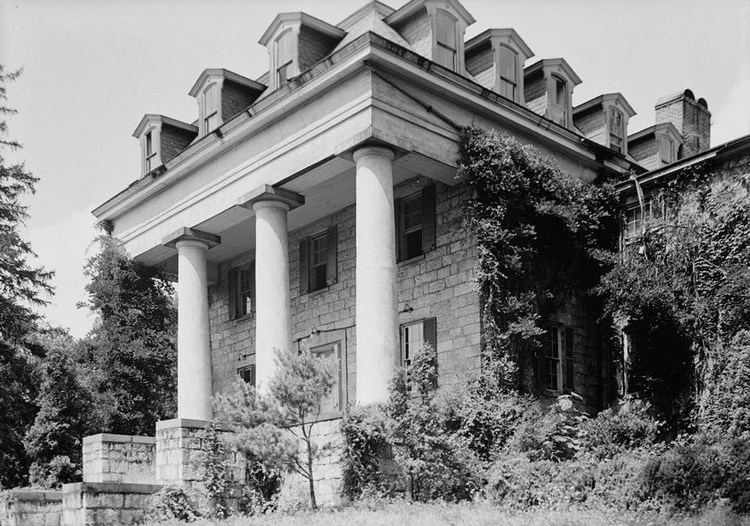Built ca. 1837 Added to NRHP 31 July 1978 | NRHP Reference # 78001467 | |
 | ||
Address 3655 Church Rd, Ellicott City, MD 21043, USA Hours Open today · 10:30AM–5PMFriday10:30AM–5PMSaturday(Maryland Day)ClosedSundayClosedMonday10:30AM–5PMTuesday10:30AM–5PMWednesday10:30AM–5PMThursday10:30AM–5PMSuggest an edit Architectural style Greek Revival architecture Similar Mt Ida, Ellicott City Colored School, Ellicott City Station, Howard County Historical, Ellicott Firehouse Museum | ||
Patapsco female institute ellicott city
Patapsco Female Institute (PFI) is a former girls' boarding school, now a partially rebuilt historical site, located on Church Road in Ellicott City, Maryland, United States. The grounds are home to popular outdoor theatrical performances by The Chesapeake Shakespeare Company. In the 1930s the Institute was also known as "Warwick".
Contents
- Patapsco female institute ellicott city
- Patapsco female institute historical ruins ellicott city maryland
- References
The Patapsco Female Institute was chartered in January 1834. It was designed by architect Robert Cary Long, Jr. and built by Charles Timanus, who also built the Court House. It opened on January 1, 1837 as a girls' finishing school; it remained in operation until 1891.
The granite faced school sized for 100 students was built on 12 acres of land in Ellicott's Mills for a cost of $27,000. The hillside building was close to the new B&O railroad terminal and turnpike roads. A waterworks, greenhouse, servant's quarters, and facilities for male teachers were built on the grounds. Classes consisted of Latin, mathematics, music, religion, and philosophy. A Normal school program was instituted with students providing labor to reduce tuition. Profit was gained from boarding fees and textbook sales.
Between 1841 and 1855, the school was operated by Almira Hart Lincoln Phelps. Phelps, a northerner and Union supporter relocated to a slave state, accepted students from both the North and the South in order to encourage friendship between the two sections of the country. In 1864, Phelps' wrote of the "fatal curse" of slavery and a present "obscure, dimmed with the tears which fall from mourner's [sic] eyes throughout the land." During Phelps' tenure, the school expanded from six teachers with forty one students to eight teachers and nine staff with seventy students. In 1852, the State removed funding for the school and a board of directors was established with Judge Thomas Beale Dorsey presiding. In 1856, Robert Archer became manager of the school, serving until 1879. During the Civil War, the 12th New Jersey Infantry Regiment camped near the Institute's grounds in 1862 while guarding the Baltimore & Ohio Railroad against the Confederacy's advance.
In 1891, it was purchased by a James E. Tyson. The last manager of the school was Sarah N. Randolph until 1896 when the board of directors sold the declining school. It was converted to a summer hotel called the Burg Alnwick Hotel. Fourteen years later, in 1905, it was purchased by a Miss Lilly Tyson and turned into a private home. In 1917, during the First World War, the building was called into service as a hospital. It was fitted with 50 beds to accommodate wounded veterans returning to the States. In later years, the building was used as a theater and again as a private residence. In 1938, the Howard County School board considered the site for a new school. The guests of the Burg Alnick Hotel used the grounds for shooting clay pigeons. In 1958, the property was sold to the final resident, Dr. Whisman for use as a nursing home. Howard county made a demand of the owner to remove all wood from the structure to prevent fires, including the roof, floors and paneling leaving the institute in a permanent state of ruins. The property was willed to Dr. Whisman's Alma-mater, the University of Cincinnati.
In 1966, the County considered buying the eight acre property again as parkland from the University of Cincinnati using a news transfer tax for school and park projects. It was purchased for $17,500 by the County soon after. Since 1966 the building has been under the care of the 'Friends of the Patapsco Institute'; it has been stabilized and partially restored, and the grounds fenced in to limit public access. The county finance director declared the building unrestorable, but budgeted $1.7 million to convert the area around it to a park.
The Patapsco Female Institute is rumored to be haunted by the ghost of a young woman named Annie Van Derlot who died of pneumonia while attending school there.
